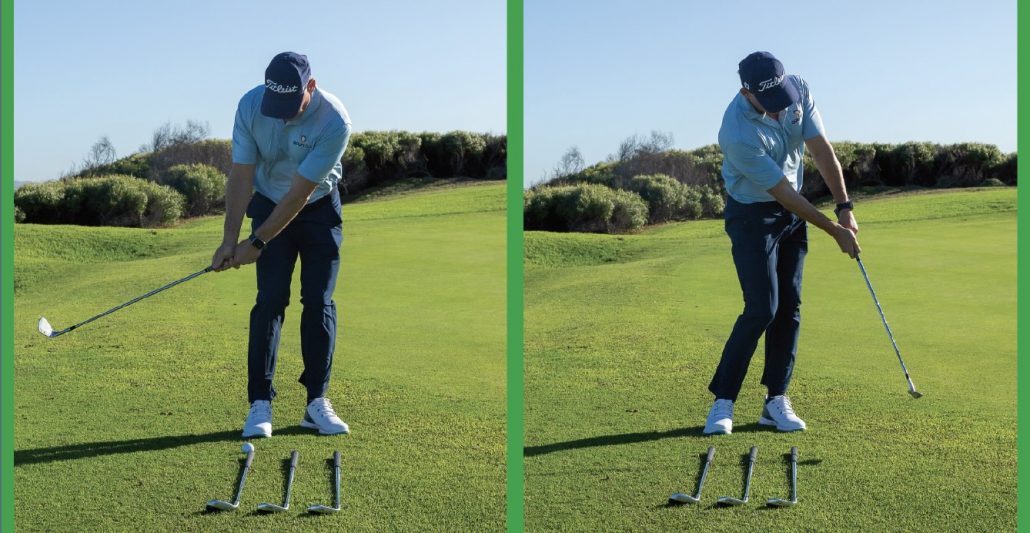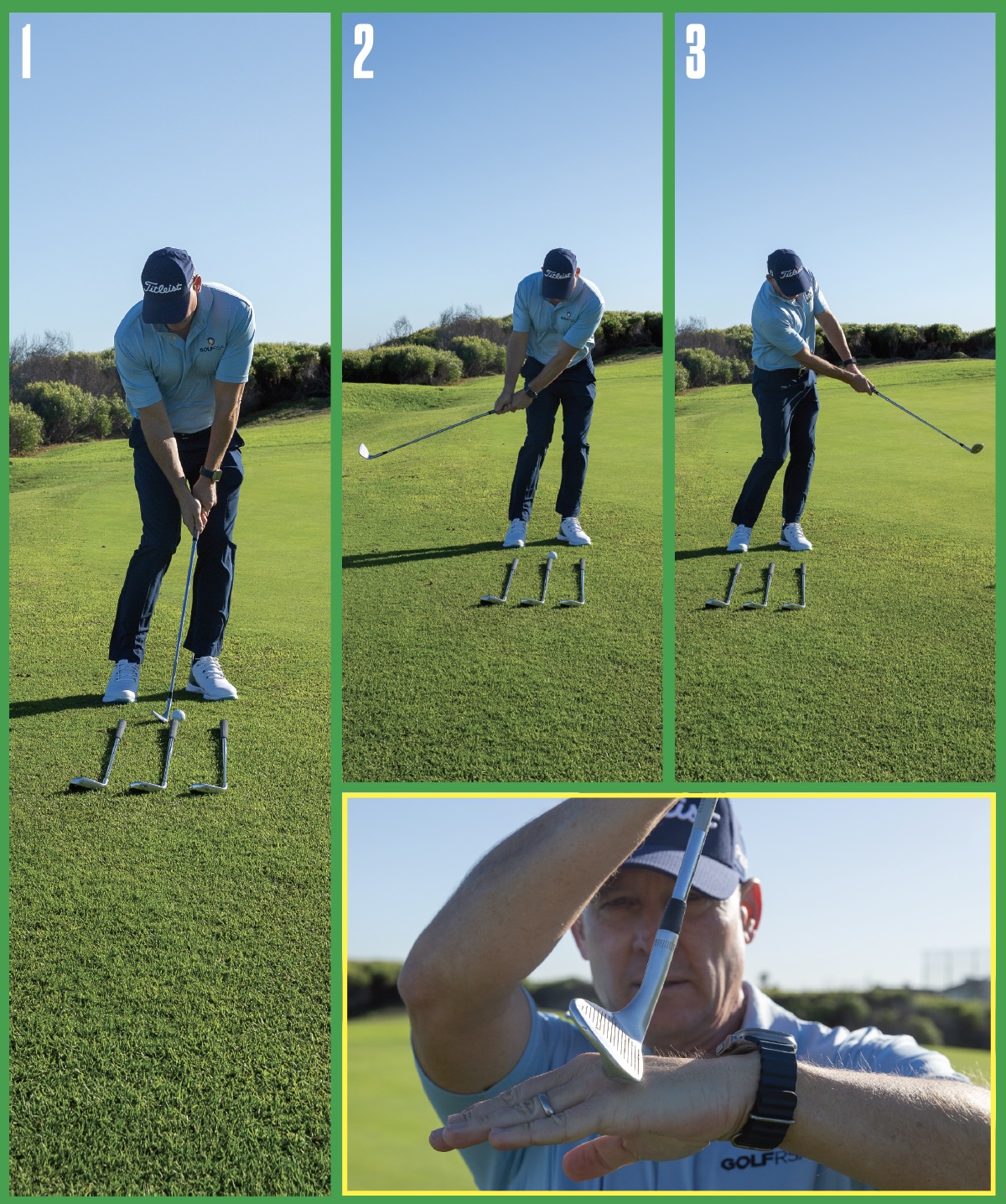If your set-up is good, chances are your shot will be too, stresses PGA professional GRANT HEPBURN.
The set-up is crucial to a successful golf shot. In other words, you can make the shot easier, or more difficult, before you have even begun your golf swing. You can also adjust your set-up to allow you to play different shots with the same club, which is particularly handy when it comes to chipshots around the green.
The following three sequences show how to play three different chipshots – high, medium and low, with the same club. Often the situation will determine which kind of shot you need to play. For example, if you have to fly a bunker to a tightly tucked pin, you’d look to hit the ball high, whereas if you had a lot of green between you and the flag you may prefer to hit a low runner.
In all of these shots that I am demonstrating, the only real difference is the ball position in the set-up. Changing the ball position changes the position of my hands in relation to the ball, which in turn changes how much loft is on the clubface. The further forward the ball is, the more in line with the ball my hands are, and the more loft there is on the clubface. As the ball moves further back in my stance, my hands become further ahead of the ball, and the shaft leans forward, creating less loft on the clubface.
In all the shots, my chipping action is quite similar, but I allow the ball position to change the type of shot. I am using the same club and same movement, only changing the ball position to affect the dynamic loft of the club.
For these shots, my weight is set up on my left foot at address and it stays there throughout the chipping action. There is a little bit of wrist action in the backswing, but my weight stays on my left foot. As I hit the shot, my body turns through towards the target with my arms, and my weight actually moves even more to my left. The club strikes the back of the ball and, depending on the ball position, the loft of the club hits the ball up into the air at varying heights.
Hitting it high
In this sequence, I have positioned the ball forward in my set-up, in line with the inside of my left foot. This allows me to take advantage of the maximum amount of loft on the club. Note how my hands are in line with the clubface at address and there is no forward lean of the shaft. This means that the loft of the club is able to pop the ball up into the air with maximum height.
This shot is useful when you need a shot around the green that flies high and lands softly with almost no roll. It is particularly useful when the flag is cut close to the edge of the green and you have very little green to work with.
Hitting a medium-height shot
In this sequence I have set up with the ball in the middle of my stance for a medium-height shot. My hands are slightly ahead of the ball, therefore delofting the clubface a little bit. This type of shot will see the ball fly less high than the shot before and roll more when it lands. This tends to be the most common shot played around the green, with the flight and the roll being of similar distance.
Hitting it low
In this sequence, I have set up with the ball at the back of my stance, opposite my right foot. This set-up puts my hands way ahead of the clubface and delofts the clubface a lot. This decreased angle on the clubface means that the ball will come out low and run a long way. This type of shot is useful when you have a lot of green to work with between you and the flag.
– This article first appeared in the August 2024 issue of Compleat Golfer magazine.












